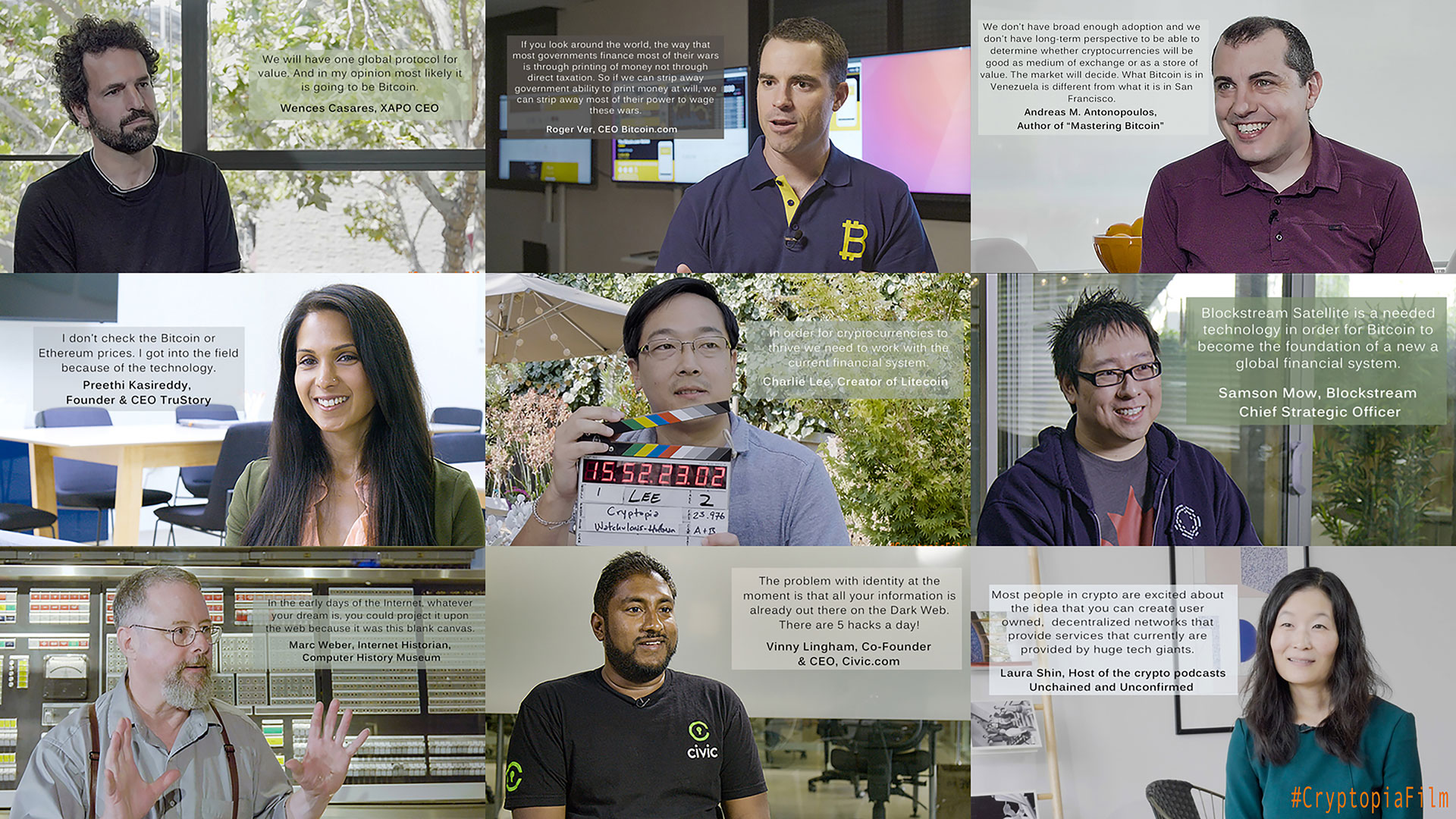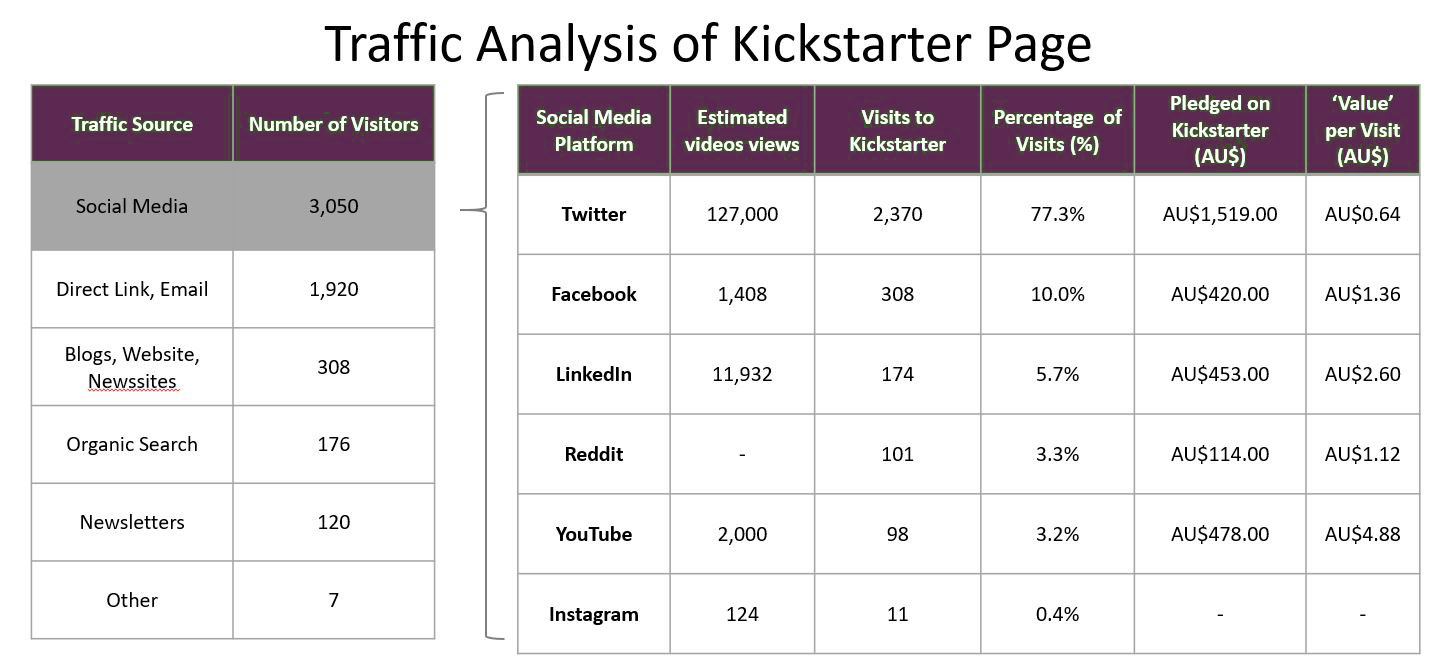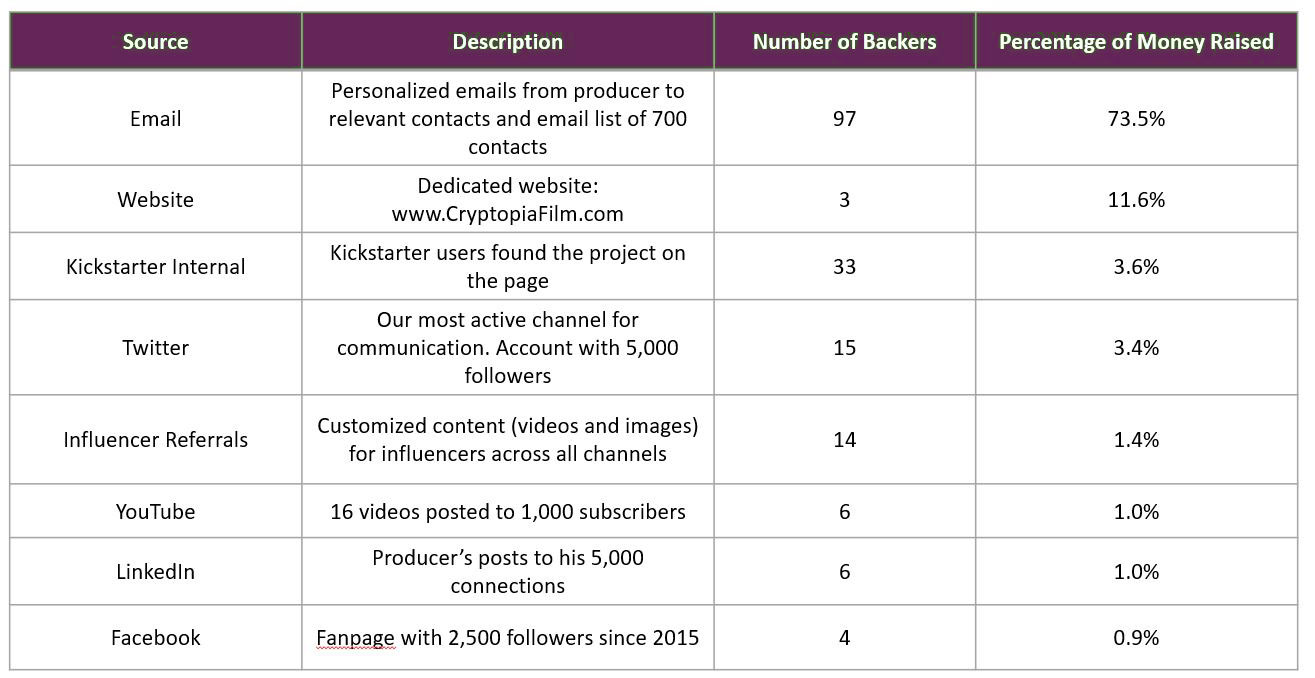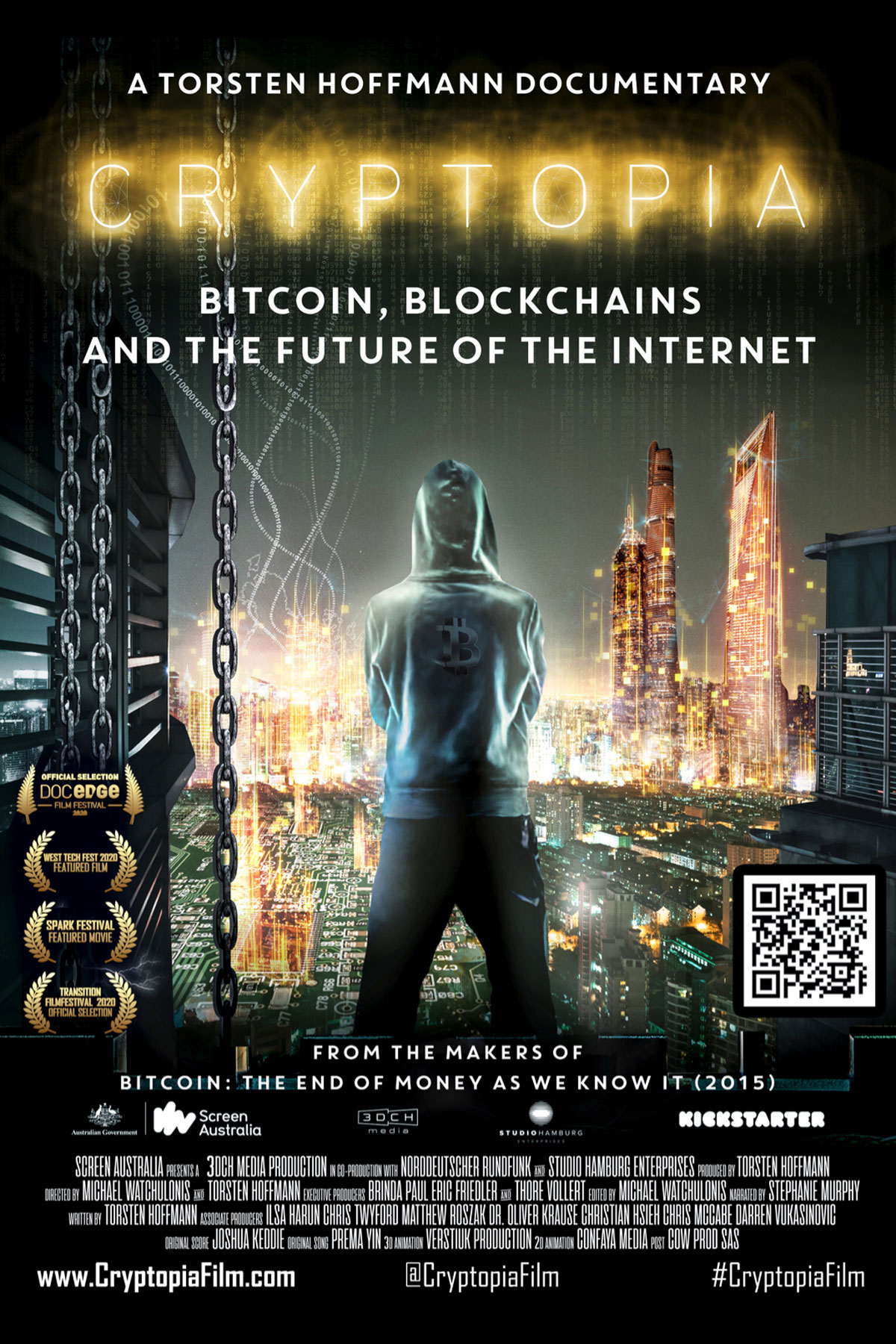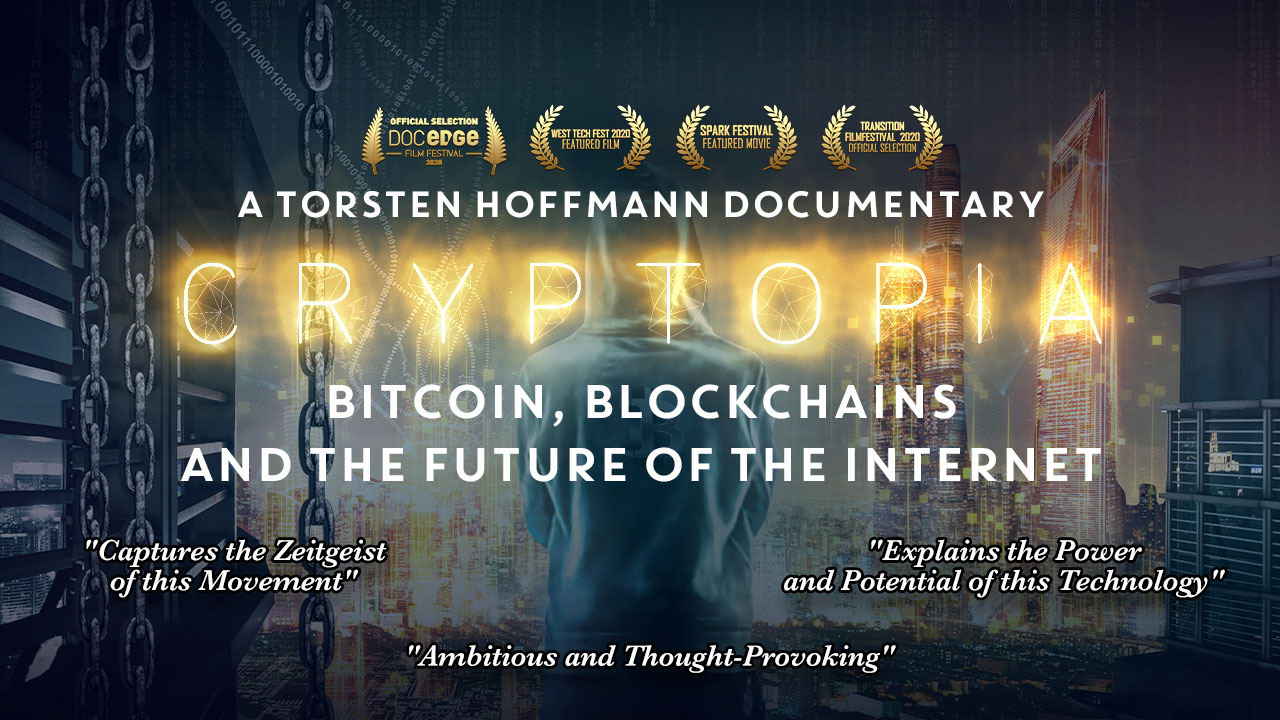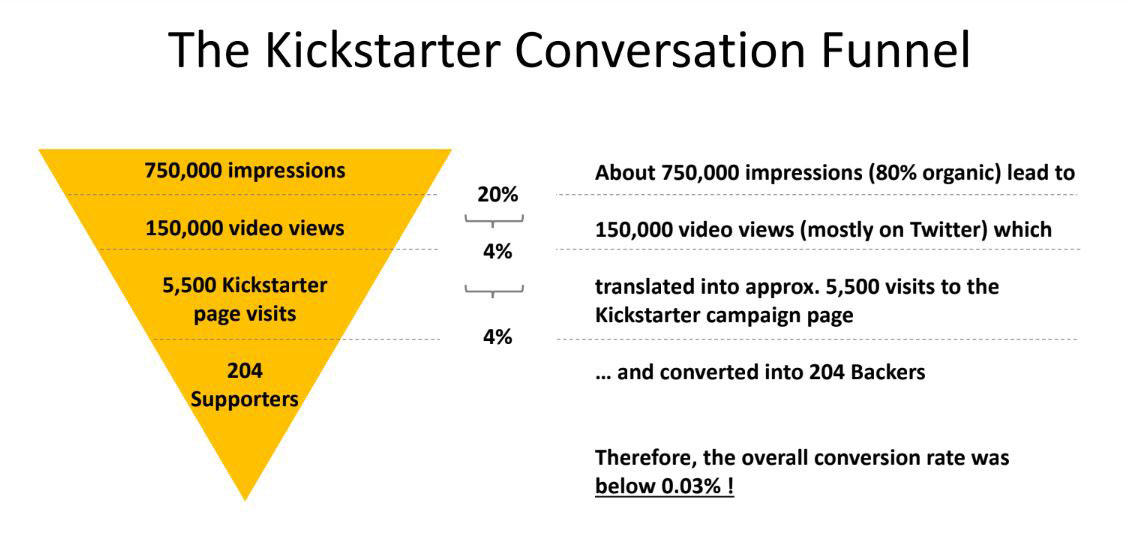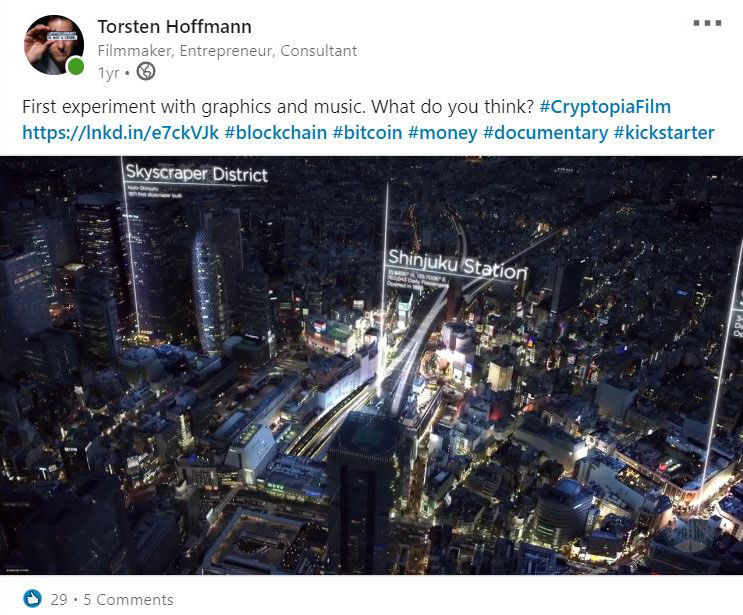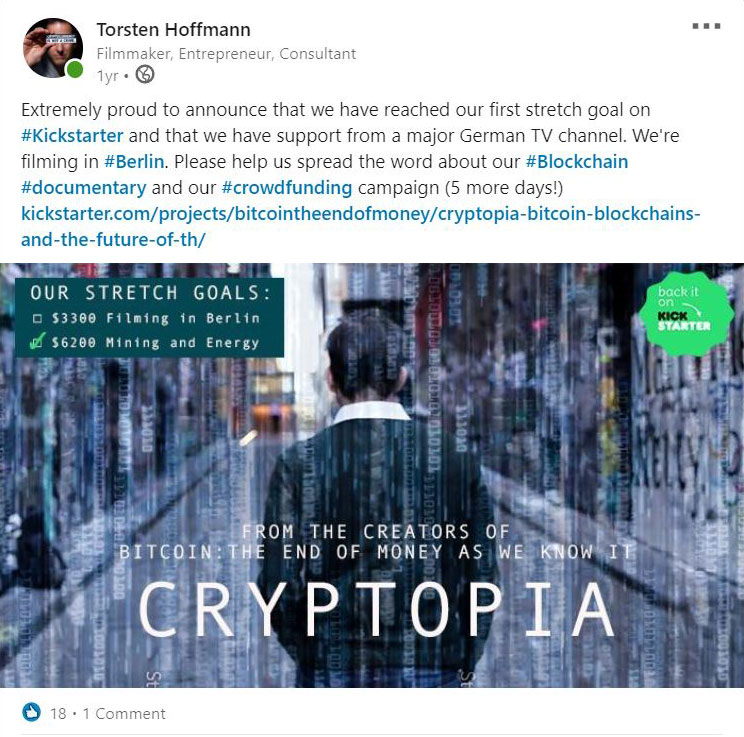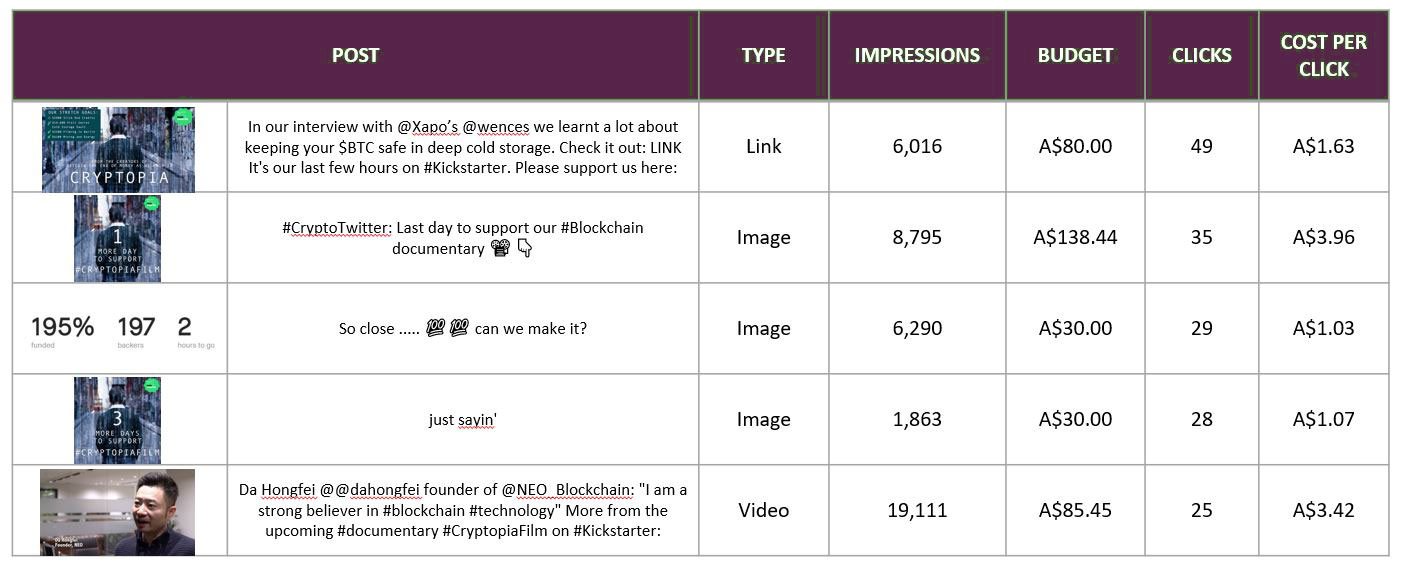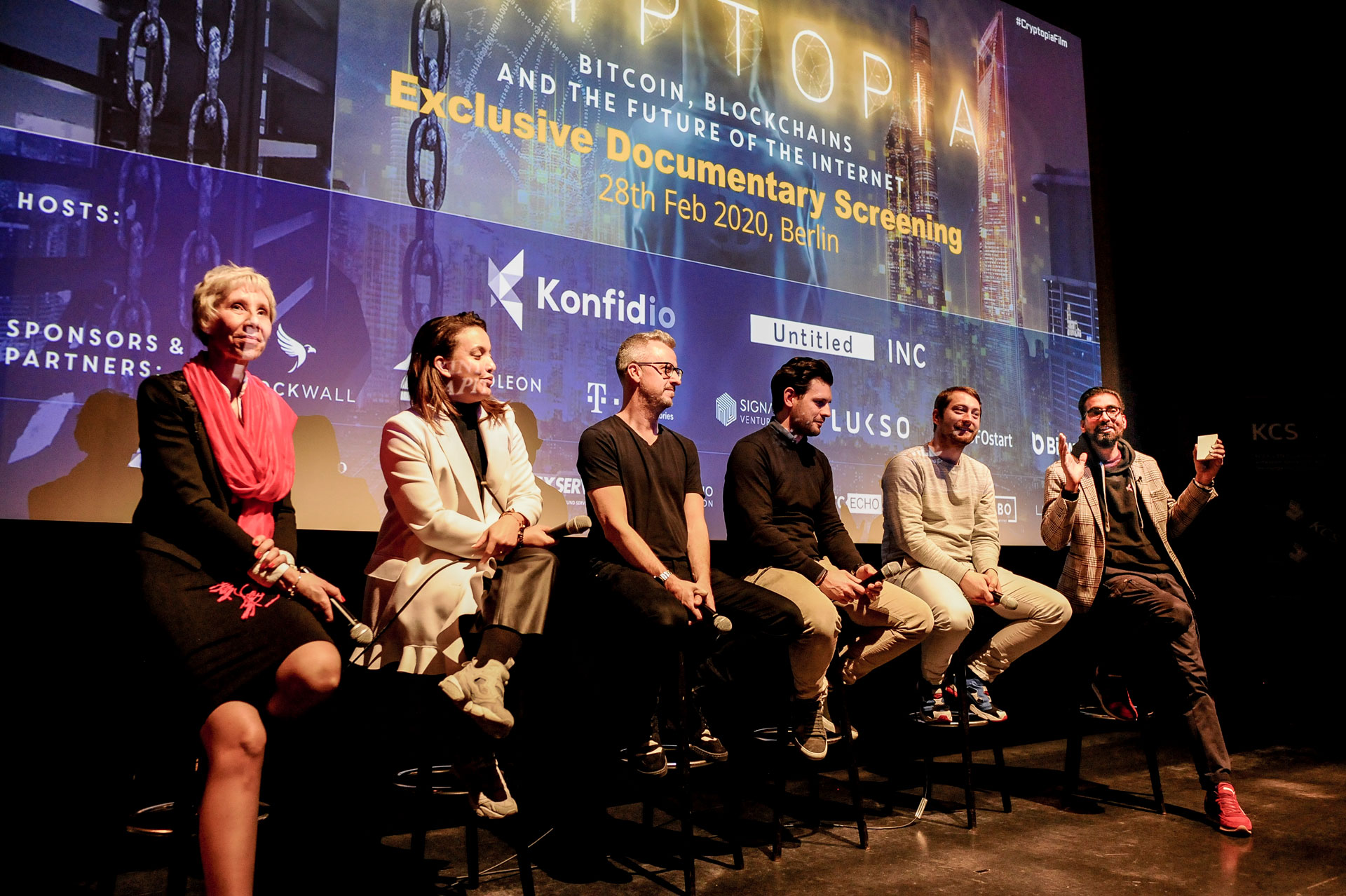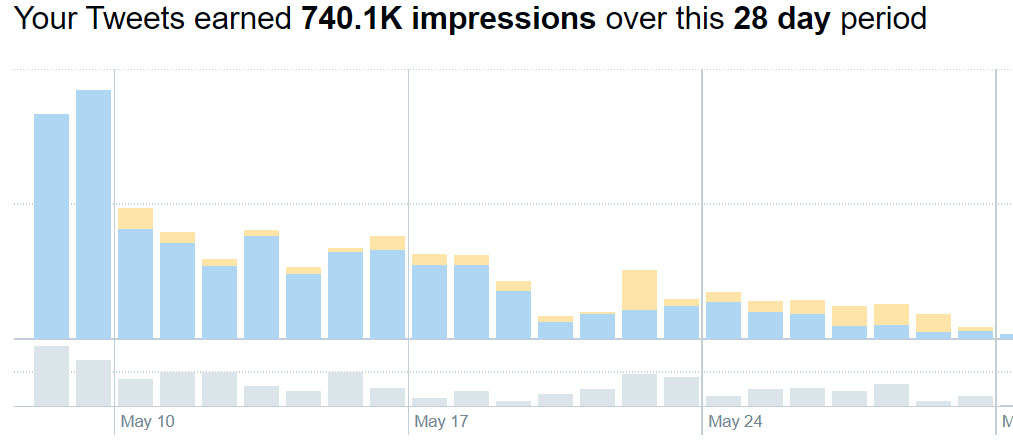
Crowdfunding Decrypted: The Case of Cryptopia
September 24, 2020
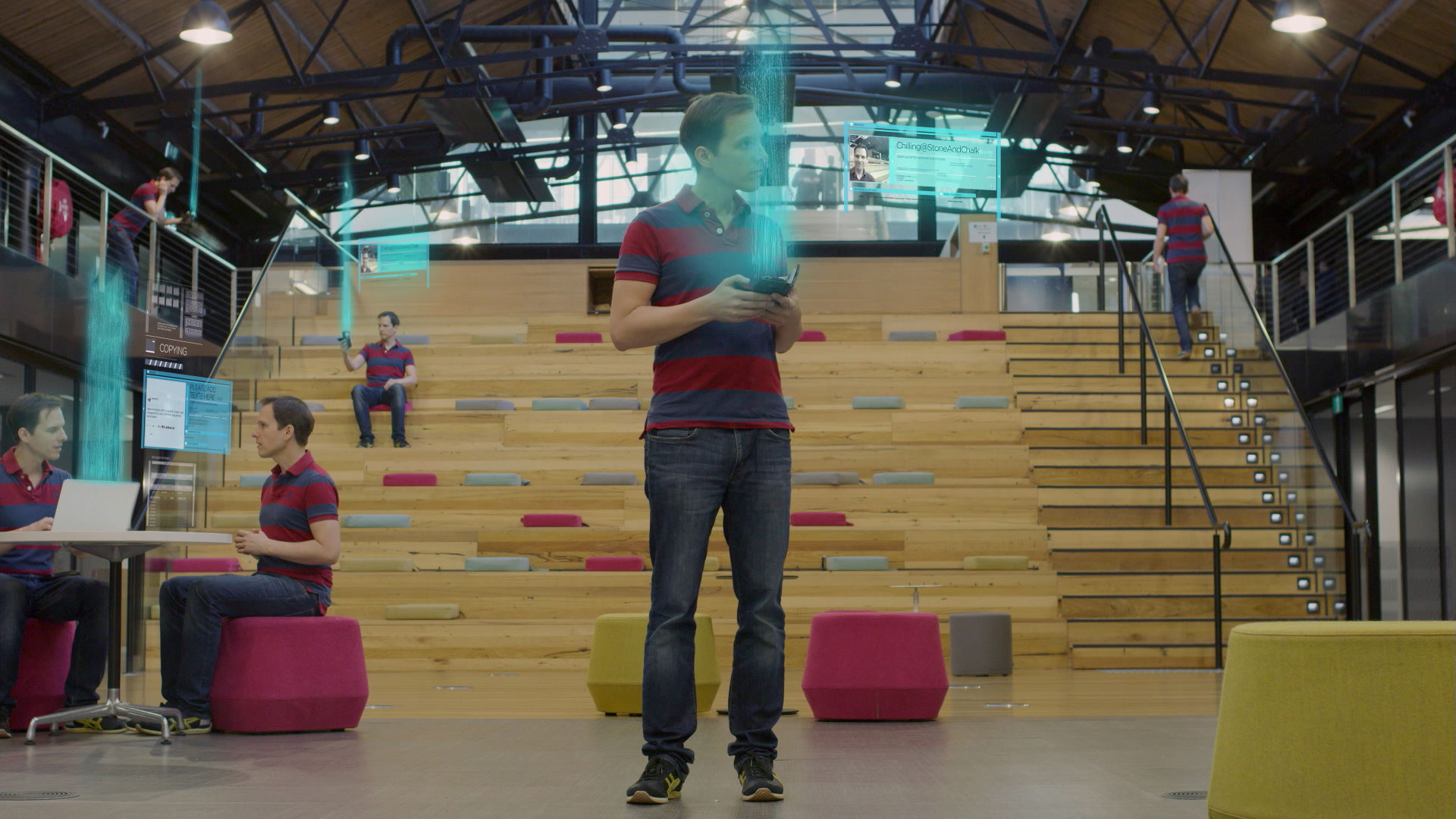
Cryptopia: Bitcoin, Blockchains and the Future of the Internet (“#CryptopiaFilm”) is a scripted feature documentary about technology and finance written and produced by me, Torsten Hoffmann. It’s an 85-minute deep dive into the crypto ecosystem and blockchain technology that examines the good, the bad, and the ugly of this movement and the people behind it. The film questions whether we can really trust the cryptocurrency industry to build this trustless cyber utopia, or whether their projects are just as unfairly distributed and easily manipulated as our current financial systems and tech platforms.
#CryptopiaFilm was supported by Screen Australia, a German broadcaster, and fans on Kickstarter, was filmed over two years on four continents, and features many of the “big brains and big egos” of this controversial industry.
At the time we embarked on this project, my co-director Michael Watchulonis and I had already made a lower-budget documentary called Bitcoin: The End of Money As We Know It in 2014-15. This film was partially funded on Kickstarter, won some minor awards at film festivals, and was heavily pirated by a passionate community of young, mostly male, tech and finance-savvy audience in North America and Europe. It was represented by a U.K.-based sales agent, who licensed it to 40 countries. By 2018, new developments and narratives had developed, and, of course, the price of Bitcoin and the size of the industry surrounding this technology had grown by a factor of 100. The once united community behind it had splintered into many different factions—offering plenty of drama and entertainment for a follow-up film.
Part One: Crowdfunding
Securing Funding
Covering this global story required shooting on 3 or 4 continents…that much was clear from the start. The reputation and fanbase we built, as well as the distribution traction we achieved with the first film, enabled us to show investors that there is an audience for our niche. This helped us to secure the funding. However, as a second-time filmmaker, I was not an established “name” in the Australian film industry. My company 3DContent Hub was largely active as a distributor and had never dealt with the Australian Government’s film commission, Screen Australia.
That’s why the sequence of the following steps was crucial.
- We needed to self- and pre-fund about half of the entire production in order to have enough material to explain to our fanbase and other investors what the story and our approach to telling it in our new documentary would be;
- We used this new footage to create a compelling teaser for a crowd-funding campaign on Kickstarter (more details below);
- We applied for a medium-sized production grant from Screen Australia. Luckily, this was approved and announced while the Kickstarter campaign was still running; and
- With the traction from Kickstarter and the funding from Screen Australia we were able to get a pre-sale in Germany via my long-term relationships in that country. This contract was signed while the crowdfunding campaign was still running.
Existing from the Prior Campaign
We didn’t have to start from zero. We had already built an audience with our first film, which targeted the same audience, so here’s what we had going in:
- Reputation in the tech community
- A network of influencers and friends in the community
- TV, VOD and InFlight Entertainment licenses in about 40 countries
- 750+ ratings on IMDb
- 5,000 Twitter followers
- 5,000 LinkedIn connections (my private account)
- 2,500 Facebook fans
- 1,000 YouTube subscribers
- 700 subscribers to email lists, including 116 previous Kickstarter backers
- Personalized emails to fans asking for early support (“the first 24 hours are the most important”)
- An early-bird special with a deadline (the first backers received more rewards for a lower dollar amount). This worked very well to get a large chunk of the total amount early.
- A rough timeline of ‘announcements’ for the campaign such as the Screen Australia news, press coverage, new videos
- A list of Stretch Goals with meaningful and achievable additions to the project in order to keep the momentum going (such as additional filming location Berlin, fancy 3D graphics, etc.)
Current Cryptopia Film Campaign (Kickstarter)
- We opted for a 28-day period
- It’s a full-time job running a crowdfunding campaign. I did not count the emails I sent during the campaign, but we can track that more than 70% of all funds raised came via this channel. Most traffic came from social media channels, 80% of which was organic (non-paid).
- I wrote 231 tweets and ran 15 Twitter ad campaigns (spending around $750) and many industry influencers shared our content. We achieved almost 700,000 Twitter impressions and 127,000 video views on this channel. Some of our organic posts had very high engagement rates of over 9%.
- We posted between 10 and 20 LinkedIn, YouTube and Facebook posts and created a new Instagram account. These platforms gained us around 15,000 video views.
- We reached our fundraising goal in 9 days
- We successfully used countdown messages (“only 36/24/12 more hours to support us…”) and reminders in the last 2 days of the campaign which helped to bring our goal achievement from 140% to 196%.
- Keep in mind that some of the rewards also require you to ship physical gifts to backers all over the world. That’s why we didn’t offer T-Shirts.
Stats
- For our audience, LinkedIn, Facebook, Instagram, YouTube and Reddit turned out to be ineffective. It’s important to note that for other documentaries this might be completely different. Knowing your audience and how to find them is your homework before you start the campaign!
- Unsurprisingly, our top countries of supporters were the Australia, USA, UK, Germany, Canada and Singapore, matching our YouTube and Facebook demographics from our first film.
- The campaign ended with 204 backers for a total of $44,000 (AUD) / $31,250 (USD). Keep in mind that Kickstarter takes a commission (5%) and that there are also credit card fees (3% + $0.20). Around 16% of backers representing 3% of total funds raised found us via Kickstarter.
- 70% of the total amount raised on Kickstarter came from 5 high-level supporters. Discarding these ‘big spenders’, the average pledge was $47.
- Pledges at reward levels below $71 made up 60% of backers but represented less than 10% of total funds raised
- On average, a click on Twitter cost us around $2.17 which, of course, can never be profitable because of the low conversion rates (see more details below)! However, I considered Twitter as the main tool with which to engage our audience and to “build the brand” of the film long-term. More than 80% of our Twitter engagement was “organic” (not paid). A rule-of-thumb is that you cannot spend money to create virality, but you can spend advertising dollars to amplify whatever is already going viral.
- Here comes the ugly truth. When all was said and done, we had achieved around 750,000 social media impressions. which resulted in 150,000 video views (20%), which in turn drove 5,500 (4%) visitors to our Kickstarter page, of which 3.7% converted into actual backers. That means the overall conversion rate from 750,000 impressions to 204 backers was a shockingly low 0.027%!
- In other words: if you cannot generate a massive amount of attention via traditional or social media, your campaign will not be successful.
- Here’s another way to look at the numbers:
- When running Twitter ads, a click might cost anywhere between $0.7 - $3.50 (USD)—our average was about $2. if the average backer is worth $47 and the conversion rate is about 3.7%, you can calculate the average value of a visitor to the Kickstarter site as $1.74.
Crowdfunding Takeaways
- Influencer marketing and partnerships successfully generate traffic—but actual conversions were low
- Social Media Ads can buy traffic but do not make sense from a commercial point of view (conversion rates, costs per click, average pledge amounts)
- A very small number of backers (2-3%) generate the vast majority of total amount pledged (70%). Get to know a few patrons, superfans, and big spenders before your campaign!
- Crowdfunding might be a (small) part of your fundraising effort, but they are more important as a tool to build your audience and brand
Crowdfunding Takeaways from the Filmmaking Team
The modern filmmaker is more of an entrepreneur who has to create a ‘product’ for a ‘market’. Audience building and branding are part of this process. Taking risks is part of being an entrepreneur. We filmed about half of the entire productions before asking for film commission (Screen Australia) or Kickstarter money.
The professional network built over many years is a key source of high value supporters. Brand awareness of our first film and the relationships built with the community translated into high level of credibility. As your email list grows, the work should get easier. Or, with each new project, you can raise a bigger budget for your bigger ambitions.
Crowdfunding Takeaways from TFC
Advertising your campaign to “cold audiences” (i.e., people who have never heard of you or your project) and asking those people to donate money is difficult. How often do you give money to strangers on the first ask? But it is possible to advertise on LinkedIn, Facebook, Instagram and Twitter through retargeting.
When you retarget them, your message touches them several times to build a waterfall of information and intrigue. Then, you convince them to donate. So, while you might start out with a cold audience, or an audience based on demographic or psychographic parameters, you need to first build awareness, and then you can retarget them using a Tracking Pixel to continue showing the campaign to for those who did visit your website, viewed your video on that platform, interacted with your CTA button because they have shown an interest and may just need more encouragement to convert.
You can also create an excluded audience so that you stop showing your ads to people who have already converted. You can also upload your own email list to various platforms or target those who have visited your website as a way to keep your campaign in front of them across platforms. Sometimes conversions will not happen until the audience is touched several times with your message.
Part Two: Distribution
My background is in distribution and I had self-distributed our first Bitcoin film on various platforms before, so this perhaps gave me a leg up.
Theatrical (and COVID lockdown)
The theatrical run had first priority for us, but even before the premiere we used cinema screenings as tests. We meticulously collected feedback for qualitative and (important!) quantitative feedback via a net-promoter-score which we increased to 69 by incorporating suggestions from our fans. Usually this was to cut out confusing or long parts. The final edit was 15 minutes shorter. We then started our world tour—with big events in Sydney, Melbourne, and Berlin. These events were supported by corporate sponsors and generated up to $15,000 (AUD) / $10,660 (USD) in revenue and 100,000 social media impressions each. We also had smaller or closed private events and I even attended Davos to present parts of the film to the finance elites and billionaires there!
This was right before the Coronavirus paralyzed the world. Unfortunately, just when we were getting warmed up and figured out how to effectively market these events and organize them with the help of local communities, the world around us changed dramatically. I had no choice but to prepare a TVOD launch.
Film Festivals
To be honest, festivals were a bit of a painful experience at first. I had applied to about 30 festivals and spent about $2,000 (USD) on application fees, but in the end, our documentary, with its narrow target audience, wasn’t the right fit for most events…that is, until we were officially selected at DocEdge, an Academy Award Qualifying festival in New Zealand. This was perfect because geo-blocking this one territory didn’t hurt the global TVOD launch. Recently, we have targeted smaller tier 2 and tier 3 festivals and have been accepted to 15 smaller ones, many of whom are now being planned as online festivals, where our documentary fits right in. We have won two or three smaller awards and are continuing with the festival run on a very limited budget.
Digital
How did we premiere the film online? My company holds all distribution rights to the film, so I decided to launch it on CryptopiaFilm.com using the Gumroad backend. We ended up renting it for about $6 (USD) and offer a buy option for a higher price which does not allow for digital download due to the piracy problems our first film encountered.
I used the analytics from the Kickstarter campaign and queued up a few influencers and journalist pre-launch. We hoped that we could count on our fanbase and influencers on launch day and hired a freelancer to help us with researching hundreds of critics, journalists, podcasts, etc. By launch day I had also grown a LinkedIn newsletter to over 1,000 subscribers.
Via various platforms, we generated around 800,000 social media impressions, 80,000 trailer views and 30,000 visits to our site in the first two weeks. The conversion rate on the site was only around 7% and I still experiment with different pricing, wording, packaging and ad campaigns. It is still too early to draw major learnings from this launch period.
The film has just been released on Amazon and other platforms. We plan on providing an update as soon as we have more details to share.
